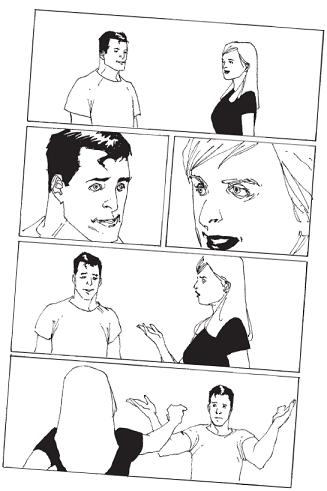
iNSidER PROFiLE
Klaus Janson
KLAUS JANSON is known by fans as an inker and a finisher, but the comics industry knows the truth: Klaus is one of the finest storytellers in the history of the medium. His approach to Daredevil and Batman revolutionized how dynamic stories are told. In addition to his body of work, Klaus is also a comics historian and teacher.
OCCUPATION: Penciller, inker, writer, colorist
DATE OF BIRTH: January 23, 1952
FIRST PUBLISHED WORK: Inked Rich Buckler’s pencils when he started to draw Black Panther in a book called Jungle Action for Marvel back in the early 1970s.
INFLUENCES: From comics I read as a kid, the main guys were probably: Gil Kane, Wally Wood, Steve Ditko, Neal Adams, Dick Gior-dano, Tom Palmer, Jack Kirby, Joe Kubert, Jim Steranko, Will Eisner. From the current generation I like: Walt Simonson, Mike Mignola, Leinil Francis Yu, John Romita Jr., Bryan Hitch, Jim Lee, James Jean. But I also have been heavily influenced by film: John Ford, Alfred Hitchcock, Martin Scorsese, the film noir stuff from the 1950s, the black-and-white films of the 1940s. Music is a big influence: The Beatles, Talking Heads, Radiohead, David Bowie. Some of the painters of the last century: Milton Avery, Fairfield Porter, David Hockney, Francis Bacon, Edward Hopper. I think it’s important to cast a wider net than comics when looking for influence or inspiration.
LONGEST RUN ON A BOOK: Probably Daredevil with Frank Miller.
BEST KNOWN FOR: I suspect that “inker of Dark Knight Returns” will be on the tombstone.
FAVORITE CHARACTER WORKED ON: The book that manages to combine some of my favorite elements—crime, superheroes and New York City: Daredevil.
DREAM PROJECT: Enough money to live on while I do some creator-owned material.
MOST PERSONAL WORK: The stuff that’s in my notebooks.
ART TRAINING: No formal training, though I did backgrounds for Dick Giordano right after I got out of high school, and that was highly educational.
ALL-TIME FAVORITE ARTIST: I have a real passion for van Gogh. Great use of space, color and texture. I think the best time I ever had in my life was the time I spent in the van Gogh Museum in Amsterdam. But if we use the word “artist” in a broader sense, the artist that is never more than an arm’s length away and that serves as a daily inspiration for me, it would be John Lennon and that group he was in.
BEST ADVICE RECEIVED WHEN STARTING OUT: It was Dick Giordano who told me to “meet your deadlines.”
one character. But generally there is a more effective way to tell the story.
• The other way is using a neutral camera shot. Maybe a cut to an overhead shot looking straight down on the table and the man and woman. This is a neutral shot; it can go on either side of the 180-degree line from there. The next shot may establish that the camera is on the other side of the room now and the woman is on the left, looking across the table to the man on the right. This is more effective by virtue of using fewer panels. In both cases, you need a neutral shot to transition from.
INSIDER VOICE
Klaus Janson on Goals
One of my favorite slogans that applies to comic book art and storytelling very well is: “If you’re not doing something, you’re doing nothing.” Whenever anyone sits down to draw or ink or color, it’s essential to be doing something. You have to have a goal, an agenda, an idea. Sitting down and drawing without thinking about what it is you are doing will result in certain failure. You can’t just draw or ink or color a comic book page without saying something. And the ability to have an idea and execute it well requires education. So, no matter what your area of interest, immerse yourself in it, learn as much as you can about it, prepare yourself, get smart and get going.

180-Degree Rule Done Right
In this version of the scene, Khoi illustrates the scene with an establishing shot depicting the man on the left and the woman on the right. The 180-degree line is now set on their line of sight. Khoi doesn’t cross their line of sight until the last panel after he has disengaged to a neutral panel.